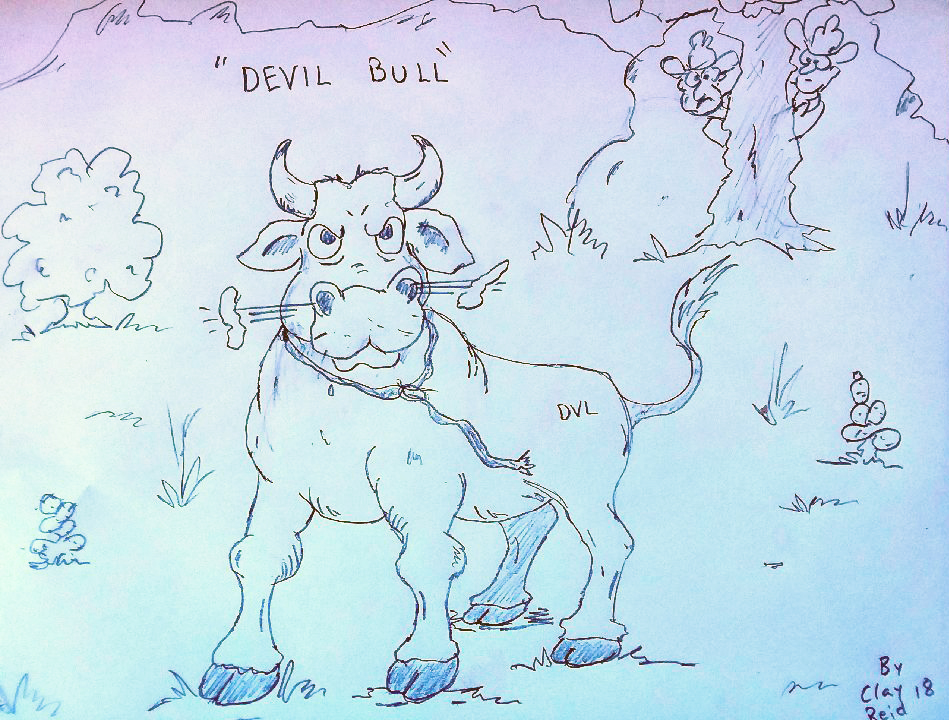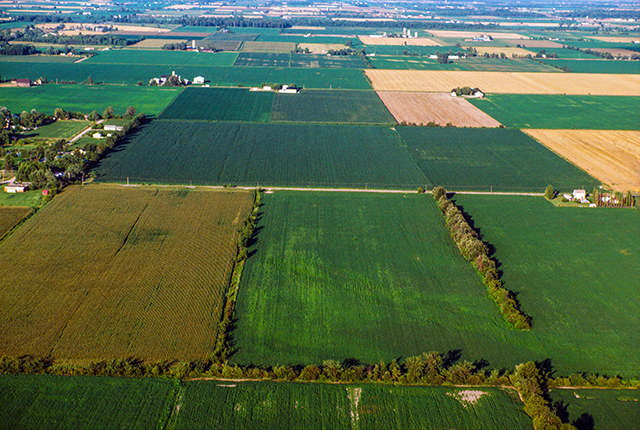Country Lifestyles
Cowboy Culture – “The Devil Bull”

By Clay Reid
Back in ’96, while I was on the Trigg Ranch of Singleton’s north of Tucumcari, N.M., I had the displeasure of running across one of the baddest bulls on the planet. The Devil Bull. We called this bull “The Devil Bull” because his horns came out and curled up just like the devil’s. That and the fact that this bull was evil. I mean like pure evil and relentless in his desire to kill you.
You know some bulls that will get after you, but after a short pass and you’re running away from them, they soon give it up and move on. This bull would chase you for a half mile in his pursuit of your death.
It all started after we had split up in the west pasture of the Trigg. I came to a bluff and looked down into a valley. There I saw Randy Simpson, Larry Orrel and Jack Neal scattering like a covey of quail with “The Devil Bull” in hot pursuit. I laughed for a moment then decided to trot on down and join the fun.
By the time I got down there, the bull was down in a creek bottom with the boys up on the other side of the bank looking down at him. I laughed and asked why they were chousing that poor ole bull. They were quick to tell me to watch out for that sucker as he was of a bad kind. I thought “aw baloney,” and jumped down in that creek to join them on the other side.
Big mistake! As soon as I did, that son of a biscuit eater came at me with a fire in his eyes that only the devil could possess. He put his nose in my horse’s flank and escorted us out of there fast and never let up at the top. We all scattered, and I was spurring that pony of mine. Randy fell in behind me, and knowing that the bull had since quit, went to hollering, “Go! Go! Go! He’s on your butt”!
To read more pick up a copy of the September 2018 NTFR issue. To subscribe call 940-872-5922.
Country Lifestyles
While We Were Sleeping

By Martha Crump
That old adage, “What you don’t know won’t hurt you.,” may have some basis in truth when applied to minor situations. However, when what you don’t know is presented in the form of a “Trojan Horse” and is what amounts to an incredible attempt to fleece American property rights, it becomes a different story altogether.
To put this unbelievable tale together, we need to step back to Joe Biden’s 2021 Executive Order which pledged commitment to help restore balance on public lands and waters, to create jobs, and to provide a path to align the management of America’s public lands and waters with our nation’s climate, conservation, and clean energy goals.
To read more, pick up a copy of the April issue of NTFR magazine. To subscribe by mail, call 940-872-5922.
Country Lifestyles
Lacey’s Pantry: Strawberry Sorbet

By Lacey Vilhauer
Ingredients:
1 whole lemon, seeded and roughly chopped
2 cups sugar
2 pounds strawberries, hulled
Juice of 1 to 2 lemons
¼ cup water
Directions:
Place the chopped lemon and sugar in a food processor and pulse until combined. Transfer to a large bowl. Puree the strawberries in a food processor and add to the lemon mixture along with juice of one lemon and water. Taste and add more juice as desired.
To read more, pick up a copy of the April issue of NTFR magazine. To subscribe by mail, call 940-872-5922.
Country Lifestyles
A Mountain Out of a Molehill

By Nicholas Waters
As winter plods along – come Spring and gopher mounds – homeowners and farmers find themselves playing a familiar song – fiddling while Rome is burning.
Let’s make a mountain out of a molehill. Those mounds on your lawn and pasture could be moles, but they’re more than likely gophers; Plains Pocket Gophers to be pragmatic – Geomys bursarius to be scientific.
These rodents dig and chew, and the damage they can do goes beyond the mounds we mow over. Iowa State University cited a study in Nebraska showing a 35 percent loss in irrigated alfalfa fields due to the presence of pocket gophers; the number jumped to 46 percent in decreased production of non-irrigated alfalfa fields.
The internet is replete with academic research from coast-to-coast on how to curtail gopher populations, or at least control them. Kansas State University – then called Kansas State Agricultural College – also published a book [Bulletin 152] in February 1908 focused exclusively on the pocket gopher.
To read more, pick up a copy of the April issue of NTFR magazine. To subscribe by mail, call 940-872-5922.
-

 Country Lifestyles1 year ago
Country Lifestyles1 year agoScott & Stacey Schumacher: A Growth Mindset
-

 Equine7 months ago
Equine7 months agoThe Will to Win
-

 Country Lifestyles7 years ago
Country Lifestyles7 years agoStyle Your Profile – What your style cowboy hat says about you and new trends in 2017
-

 Country Lifestyles4 years ago
Country Lifestyles4 years agoAmber Crawford, Breakaway Roper
-

 HOME7 years ago
HOME7 years agoGrazing North Texas – Wilman Lovegrass
-

 Country Lifestyles7 years ago
Country Lifestyles7 years agoDecember 2016 Profile, Rusty Riddle – The Riddle Way
-

 Country Lifestyles8 years ago
Country Lifestyles8 years agoJune 2016 Profile – The man behind the mic: Bob Tallman
-

 Outdoor9 years ago
Outdoor9 years agoButtercup or Primrose?






